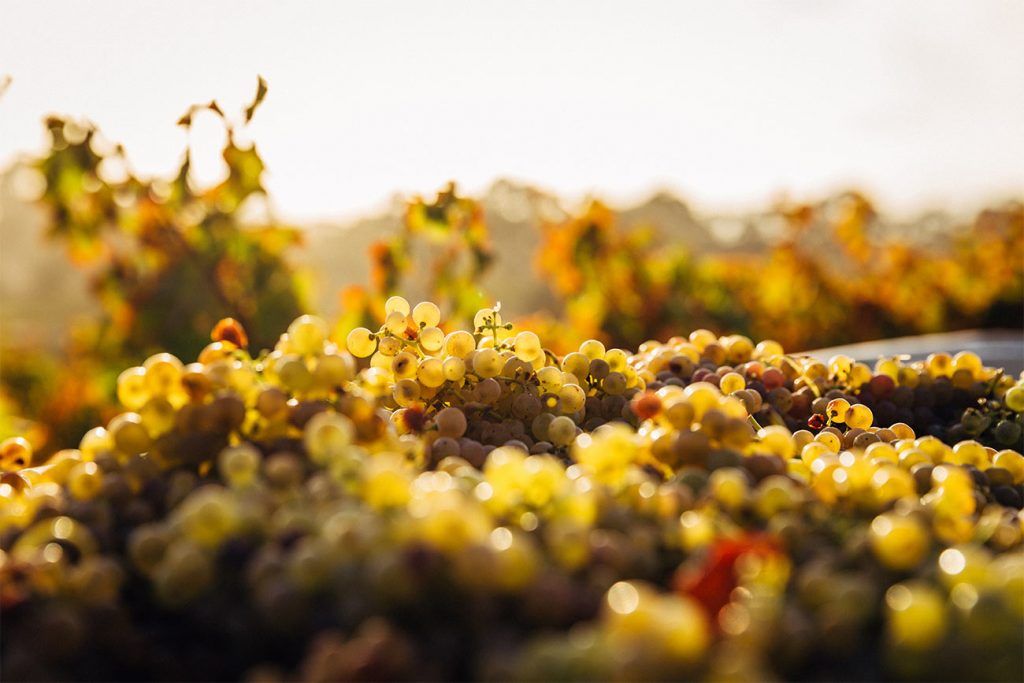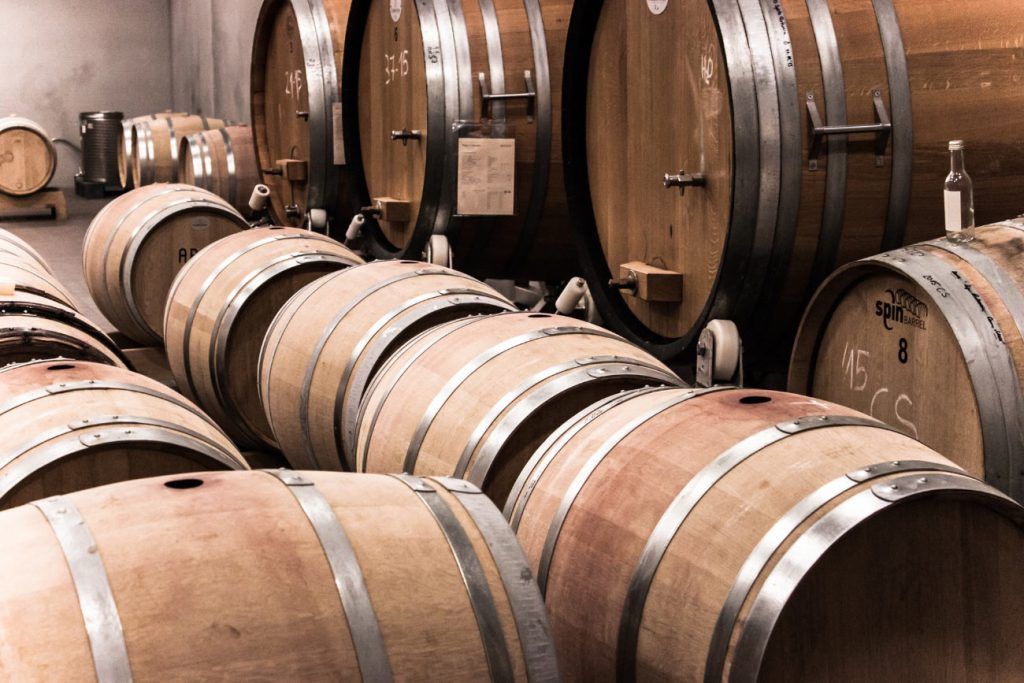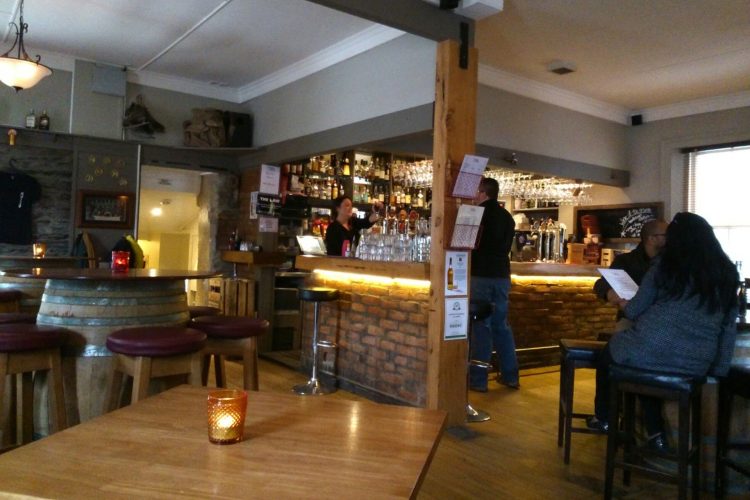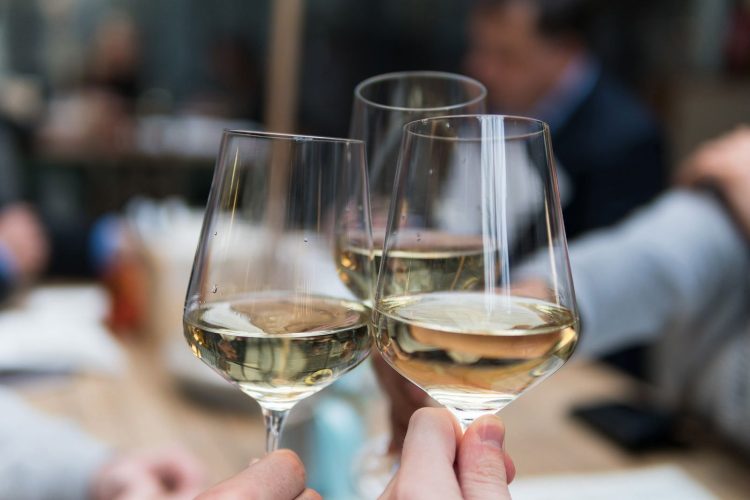As the grapes are harvested the process of making wine moves from the vineyard to the winery. Many producers have their own wineries on site, others sub-contract to production companies or other wineries. While on your wine tour with us you will visit some tasting rooms that are attached to physical wine making wineries.
Regardless of colour or style, the making of wine from grapes involves the process fermentation. Fermentation is the conversion of the sugar in the grapes into alcohol. The sugars interact with the yeasts that grown naturally in the bloom of the grape (which is a fancy name for the skin). The sugars are caused by the ripeness in the grape – the more ripe the grape, the higher the sugar, the higher the alcohol content should be.
The fermentation process causes a lot of heat and controlling the temperature during the process is very important to avoid spoiling the wine. While on your wine tour you might get to see all means of systems are used from water jackets around the vats to advanced cooling technology to keep the temperature down.
RED AND ROSÉ WINES
In most cases the grapes firstly pass through the sorting table where they are de-stalked and any bad ones discarded (not ripe, mildew etc) before being placed in the fermentation vats. The ideal temperature for red wine to ferment is between 20 – 35 degrees Celsius. This is higher than white wine because the heat helps extract the red colour from the grapes.
It is important to understand that the colour of wine does not come from the grape juice but from their skins. It is possible to make white wine from red grapes but not vice versa. How long the juice spends soaking with the skins determines the colour. For a rosé, the grape juice only lies with the skin for a few hours. To extract even more colour on red wines a process known as “remontage” involves pumping the juice from the bottom of the vat over the skins to get more contact.
The skins also carry a chemical called tannins which are bitter in flavour. Too much tannin in a wine can make it bitter, stringent and hard to drink. Tannins slowly dissipate in wine over time and for wines designed to age they provide a strong backbone. But to age a wine you need many other factors including strong fruit character and a bank balance that doesn’t necessitated immediate sale. Most wines are produced to be sold quite quickly so finding the right balance between colour, flavour and tannins is a winemaker’s art.
Winemakers may also add some whole bunches with stalks to their fermentation vats. In New Zealand this could be between 20 and 40% of the production in the top wineries that produce the best quality fruit. When whole bunches are placed in the vat without first pressing they begin to ferment within themselves before they actually burst thereby extracting great colour and sweetness without the associated tannins.
Fermentation of red wines takes typically between 6 and 12 days; a sleepless time for most winemakers.
When fermentation is completed, firstly the free running wine is collected. This is considered the best quality wine. The remainder of the juice is then pressed and the wine set aside for maturation. The free run wine and the pressed wine may or may not be blended together depending on the winery’s brands and markets, the type of season it has been and the winemakers preferences.

WHITE WINE
Like red wine, the grapes for white wine are also sorted and de-stalked but they are also crushed or pressed to remove the tannic skins immediately. Fermentation then takes place either in stainless steel vats or sometimes directly in casks at between 15 – 20 degrees Celsius. The lower temperature maintains the freshness and aromas of the white wine.
As the yeasts are used up in the fermentation process they die creating a particle called lees. For wines such as Chardonnay and sparkling wines like Champagne, the lees are often stirred back into the wine to give a buttery yeast flavour.
Most white wines are matured for only a short period and very few spend much time in oak barrels. If they do, they are often older barrels that have been used previously for other wines. Big, full-bodied Chardonnays may spend time in new oak barrels.
SWEET WINES
Those luscious sweet wines that we all love are created through a number of different ways. The truest method is where the grapes are so rich in sugars that fermentation stops naturally because all the yeasts have been used up before they have converted all the sugar to alcohol.
This happens with the wines known as late harvest in which the grapes are picked right at the end of Autumn and into Winter after they have completely shrivelled up with no water left in the fruit. To achieve this requires perfect conditions to allow the grapes to continue to age without rotting. Another form is ice wine which is created on very rare occasions when the grape freezes on the vine and the rich sugary juice can be extracted without any water, because the water is frozen.
Other methods of creating sweet wines may involve filtering out some of the yeasts before fermentation, adding sulphur dioxide midway through halt the fermentation before all the sugar has been used up or adding unfermented sweet grape juice (called süssreserve) back into the dry wine.
AFTER FERMENTATION
Once the wine is ready and before it goes into storage for maturation all wines regardless of colour or style will go through the processes of racking which involves moving the wine to clean casks away from the lees and fining where different substances according to the wine makers preference (egg white, bentonite or isinglass) are added to the wine to remove any small bacterial substances. Finally, the wines go into storage for maturation.

The winemaker is as much a chemist as an artist; treating each harvest differently. Even grapes from different parts of the vineyard maybe fermented and matured separately.


